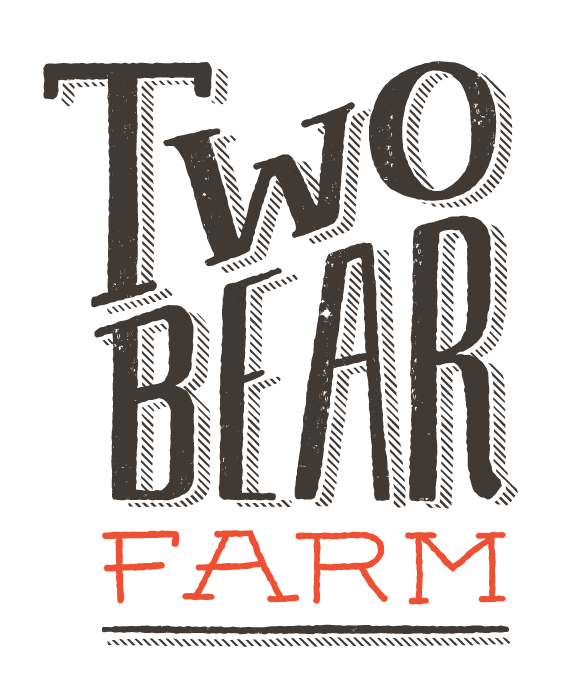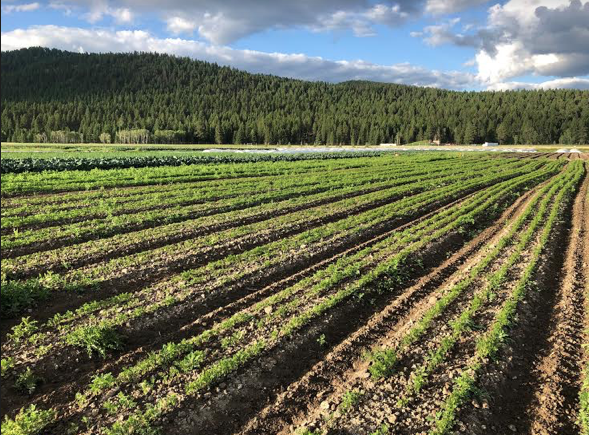Good human nutrition! One of the most fascinating topics in food production, but one that seems to get inadequate attention in agricultural, pharmaceutical, or medical circles…. I’m guessing due to its low profit margin. Once again, this is an insanely complex issue to which no single newsletter can do justice..but I want to give you a fresh perspective on a few key points that you likely won’t see on the nightly news, and I apologize in advance if the weather and topic have me feeling a bit surly.
Humans are a funny lot, especially those of us in the “western world”. Whether it’s our egos or our super-egos ( I can never get them straight) we seem to really have a hard time accepting that we don’t know everything. We hate uncertainty. We want answers for everything, and we will reduce a complex system down as far as needed to fit it into a box we can understand. After all, how can we believe in human exceptionalism if we don’t know everything? Unfortunately for us, it’s a big complicated world out there. Nature is vast, complex, beautiful, and highly evolved. So let’s start with some basic facts.
First, soil is alive. It is a living ecosystem that has evolved over millions of years and is very good at what it does….cycling nutrients, storing carbon, filtering and holding water, basically serving as the crucible of all life. Yeah, that’s humbling….I just sat inside all day hiding from the cold. A teaspoon of soil has over a billion living organisms in it. When plants grow in soil, their roots don’t simply suck water out of the soil to make plants grow. There is a complex relationship (to put it mildly) where plants use sunlight and CO2 (You all remember your photosynthesis lessons from school, right!) to create carbon-based sugars. While some of these sugars are used to grow the plant itself, science is now finding that upwards of 40% of these sugars are excreted out of the plant roots to feed the microbiology living in the soil (this is also why plants are capable of sequestering carbon in the soil). The soil food web, which is thriving on eating this carbon based energy source (and each other), then set to work breaking down soil minerals and nutrients to make them available to the plants. And there are lots of minerals in the soil, not just N-P-K. In fact there are at least 14 trace minerals that we know are absolutely critical to the functioning of the human body. When these soil microbes reproduce and then die, even their bodies decompose to release plant available nutrients. Their death brings forth new life….. No coffins and formaldehyde for them. So what I’m saying is, it’s the soil that feeds the plant, and the plant that feeds the soil. A truly mutualistic relationship….another concept humans seem to have a hard time comprehending.
Within this complicated ecosystem, the plants themselves have evolved to be able to produce over 40,000 chemical compounds, often called secondary metabolites, to serve many functions. Chemicals to make the fruits sweeter, to give color to flowers, to fight off insects and disease, to resist drought or frost…. many we don’t even understand. It’s a hard world out there when you are a plant rooted in one place, and you need a lot of tools to stay alive. You know many of these chemicals by name from the vitamin and health food world..antioxidants, beta carotene, flavonoids, phenolic acids, etc. It’s this complex mist-mash of secondary compounds and minerals and vitamins that give food it’s flavor and it’s nutrition, and it all starts with the soil.
With that in mind, ponder for a moment that our current industrialized food system, which is supplied by chemical-based commodity farming, views the soil basically as a dead or inert substrate. One in which crop scientists have determined that all that is really needed to grow a plant is nitrogen, phosphorous, and potassium. And because the plants don’t have what they need to make secondary compounds to defend themselves, we have to throw in harsh chemical insecticides and fungicides to help them along. Year after year. This system feeds the plant these three nutrients, while ignoring basically everything else that goes on in the soil. Through excessive tillage, heavy use or herbicides and pesticides (basically bio-codes), and harsh chemical fertilizers (anhydrous ammonia?!), this system has created a self fulfilling prophecy….dead soil. Because this system does not support soil life to replenish soil fertility, and because common fertilizers do not contain trace minerals, the nutritional value of the food crops in our country has decreased by over 40% in that past century. In other words, a head of broccoli grown on a commercial farm in 1950 would have had 40% more nutrition than a head of broccoli grown on that farm today.
Then ponder this:
How can a crop system, such as the increasingly popular hydroponic vegetable production system, which has no soil in it, and gets its fertility from a bottle, produce food that is of equal complexity and high nutritional values as that of food grown in organic soil? And the controlled environment, while good at reducing risk of crops loss, puts no pressure on the plant to develop secondary metabolites.
Well, if you accept that in the natural world, taste equals nutrition, and you’ve eaten hydroponic tomatoes or strawberries, you already know the answer to that…not much flavor. This is a huge deal, because in our modern day zeal for technology, innovation, and the ability to monetize everything in our lives, hydroponic “farming” is going mainstream as we speak. I’ll dive into this later in the week, but the hydroponic industry, with the help of our friend Tom Vilsack at the USDA (his first time there under the Obama administration), recently rammed through changes to the Organic program to allow hydroponics to be certified as organic. Something that was never possible up until last year. So now we are seeing a massive wave of hydroponic fruit and vegetable production that is threatening soil based farmers across this country, especially in the strawberry farms of California and the blueberry farms of Florida. And there is a real concern that flavorless and nutrition-less fruits and veggies are increasingly going to become the norm for our society.
As an aside, the reason I said “in the natural world” above, is because food scientists have figured out a way to dupe the human brain to eat junk food. It’s called the “Dorito Effect”, and there is an excellent book about it by Mark Shatzker. Basically, the human sense of taste and smell are one of the most complex senses we have (and require the most DNA in our genome dedicated to one purpose). We have evolved to understand that what tastes good is good for us, and that we should eat more of it. By creating flavor enhancers in a laboratory, food scientists and engineers have figure out a way to make food that has no nutrition taste good, and therefore trick our brains into seeking it out. The ultimate hack. It sounds a bit diabolic, but we have turned our desire and programming to seek out nutritional food into a way to get us hooked on ultra-processed, low nutrition, flavor enhanced foods…much to the detriment of our health and our waist lines.
But back to the strawberry. I had our plumber ask me the other day why the strawberries at Costco were so big, but were white all the way through, and had no flavor. My best guess was because they were grown hydroponically, picked before they were ready so they could be shipped without spoiling, and because they had very little nutrition. And that it is going to become a more common experience as hydroponic strawberry production continues to expand and supplant soil grown berries in California. And the underlying reason this is happening is because the food in our society is sold by the pound, not by its nutritional value. Which leads to another point to consider.
Imagine how different the world would be if food was sold based on it’s nutritional content. When you looked at a head of broccoli in the grocery store that was $1.25 a pound, and had 10 “units” of nutrition in it, and then you looked at a head of broccoli at the Two Bear Farm stand that was $3 a pound, but had 40 “units” of nutrition….which one provides you better value? I know many shoppers automatically reach for the $1.25, because they can’t “see” any difference between them, and they are focused on price rather than value. And they assume a head of broccoli is a head of broccoli. But the nutritional difference, not to mention the effect on the landscape and laborers who grew those heads of broccoli, is completely different. Dare I mix my vegetables and fruits, but it’s an apples to oranges comparison. If you are buying food because you want positive health outcomes, then the $3 head of broccoli is a better value. It is not more expensive. And it’s effect on what the landscape and your community looks like is significant. And this huge issue in our food system. How to get people more nutritious food, when they aren’t willing to pay for the nutrition.
The last point I want to make is that the same issue of focusing on pounds, or yield (to put it differently) is what drives our industrial food system. Farmers of grain, corn, soybeans, and other commodities are so focused on the yield, that they will justify any means to maximize that end. “Big Ag” has completely lost touch with the fact that farmers should be growing healthy food, rather than producing cheap empty calories. Because farmers are not paid for producing nutrition, they are forced to maximize their yield. And to do this, they use harsh fertilizers, herbicides, and GMO technology, which all undermine our health and the health of our landscape.
And I get it. We live in a capitalistic society. If we were to have a general population that ate nutritious food, the financial benefits would be widely dispersed across millions of small farms, and the health benefits and high quality of life would be widely dispersed across the population. That would make us all rich, in a sense. But that’s not the world we live in. We live in a world where wealth is constantly being concentrated into the hands of a few. It’s easier to concentrate wealth by having an unhealthy population that requires lots of medical and pharmceutical care.
It is a damning fact that in many communities in our country, people don’t have any access to nutritional food. That poor health outcomes are virally guaranteed by an industrial food system that pays no attention to health or nutrition.
It’s also easier to concentrate wealth by driving many small farmers off the land and concentrating land ownership into fewer larger farms owned by wealthier people. Did you see the other day that Bill Gates, yes, that Bill Gates from Microsoft, is now the largest owner of farmland in the United States? In our country, we have lost over 4.5 million farms in the past 100 years. Not because people wanted to quit farming and lose the family farm, but because they were driven off the farm by the economics of the industrial food system. The great agrarian author Wendell Berry would argue, and I would agree, that less farmers on the ground means less care for the land.
And really, at the end of the day, that’s it in a nutshell. Our country has a serious pandemic it is dealing with. Not Covid. But a lack of CARE in our social, political, and economic systems.
It’s what’s missing in our food system. Life should be about doing the right thing, not seeking profit at all costs. Two Bear Farm is focused on putting nutrition back into food because its our duty as farmers, and as concerned citizens. And that’s the pledge that our farm makes to you.










Well said ….
Lots to digest
Thanx
Wow. I’v never had the nutritional info laid out for me like that. It’s so clear and concise. I’d definitely use that metric to decide what to purchase. Sounds like there’s no way for a consumer to know the nutritional value in their fruits and veggies. That’s too bad.
There is actually some one working on it! The Bionutrient Food Association is trying to develop a phone app that literally can measure nutrition in your food much like a Brix reader does. Stay tuned….
Excellent article!
I loved this piece! Well stated.
Word. Loved this Todd; spot on!! It’s mind blowing that hydroponic crops can get NOP cert…that’s a much larger discussion since ALL certifiers are ultimately about profits too 🙁
Dolf Zantinge (Water and Light BV in the Netherlands)…re: water and how 5G/wifi/bla bla will start affecting the nutritional content of our crops too…insert exploding.head.emoji.
The Gimlet Media podcast “How to Save a Planet” (available through the Apple App store and/or Android app platforms) has a really great podcast on soil regeneration. so inspiring… made my whole family (including 2 teens) listen to it on a recently on a longer drive. Highly recommend.
Thank you for this. While it’s heartbreaking to see mainstream agriculture move this direction, it is another reason we are so grateful for your service to our community!
Well done, I submit that what you are doing is capitalism (free enterprise). What the government run “farms” are doing is socialism (It is government control and coercion). Have a beauty day
Yes, I agree. I think many conservative free-market promoters actually engage in socialism all the time via subsidies (Big Oil, Big Ag, etc.) But it’s hard to just tag what happens with a single term. What Two Bear Farm does is capitalism, but not the “maximizing shareholder profit at all costs” model that many corporations do. It’s capitalism with values. Similar to what you see from “B”corps, or from the triple bottom line approach (People, Planet, Profit).
You need to write a book! So beautifully written and informative! I love seeing your emails in my inbox!
I think of the information you are providing us as the ‘truth and consequences’ of farming.It’s an emergency situation, and I see it more clearly now.
Also, thank you for enlightening me about hydroponics.
my 2cents…this week’s information makes for a great little book of essays 😉